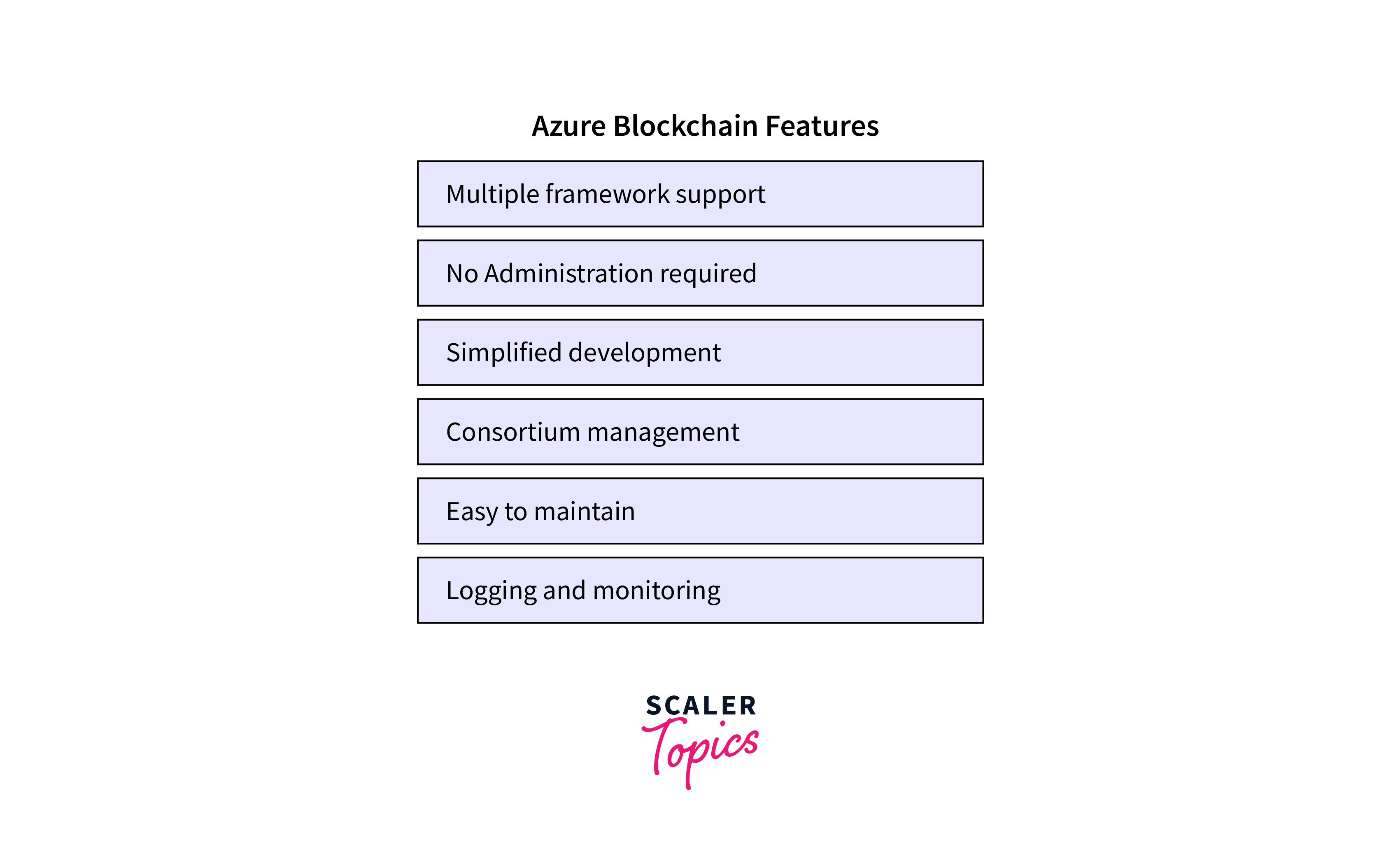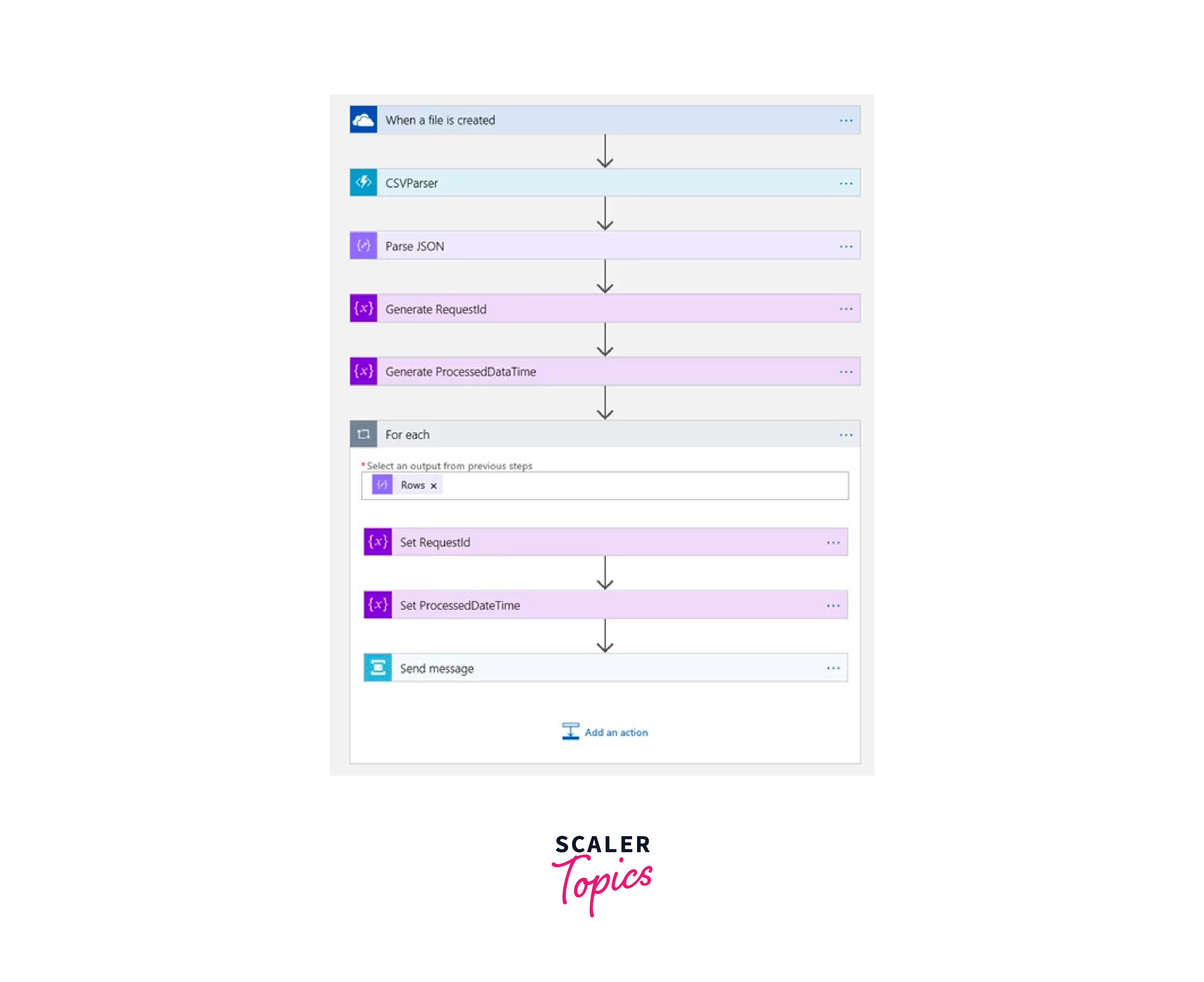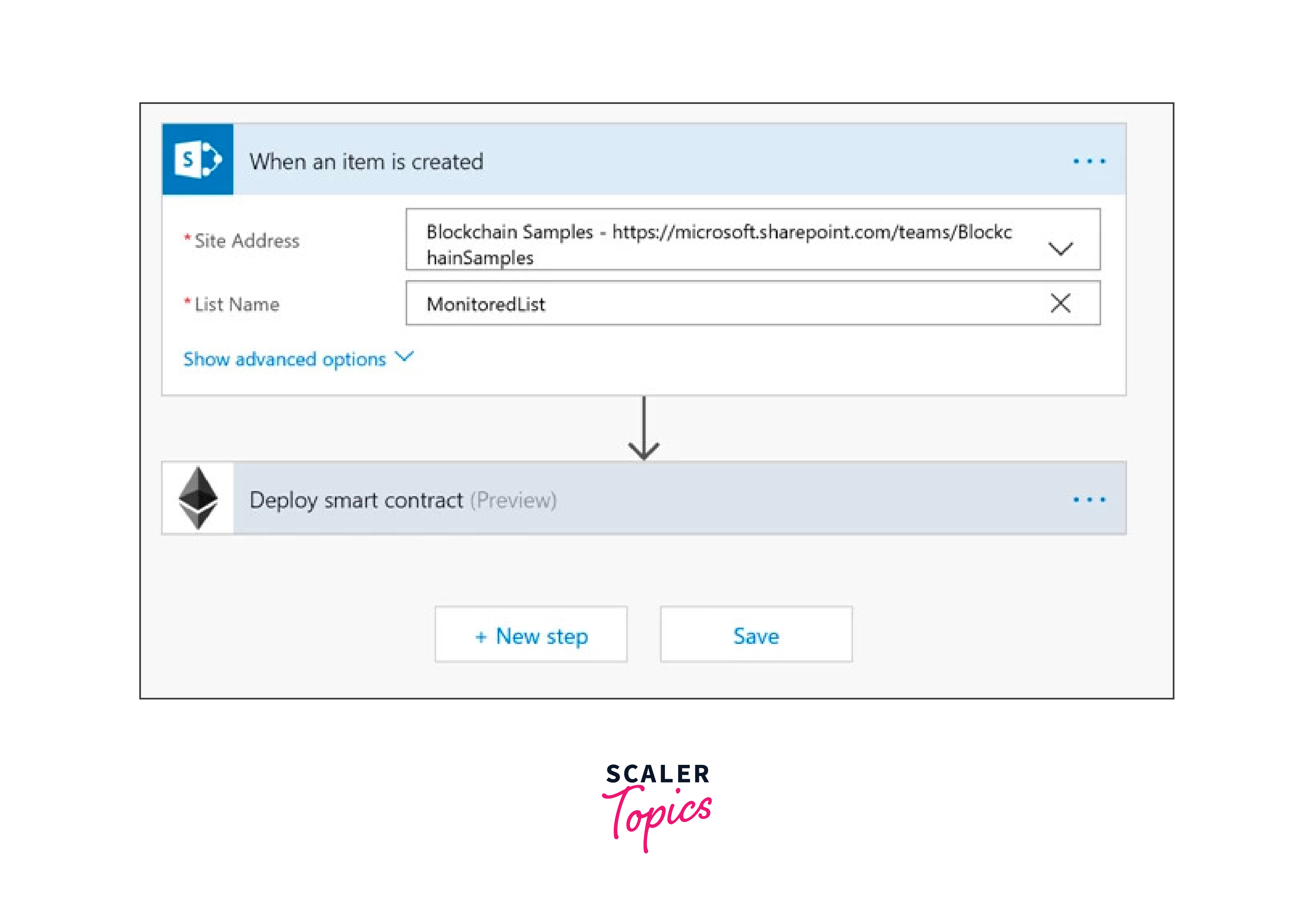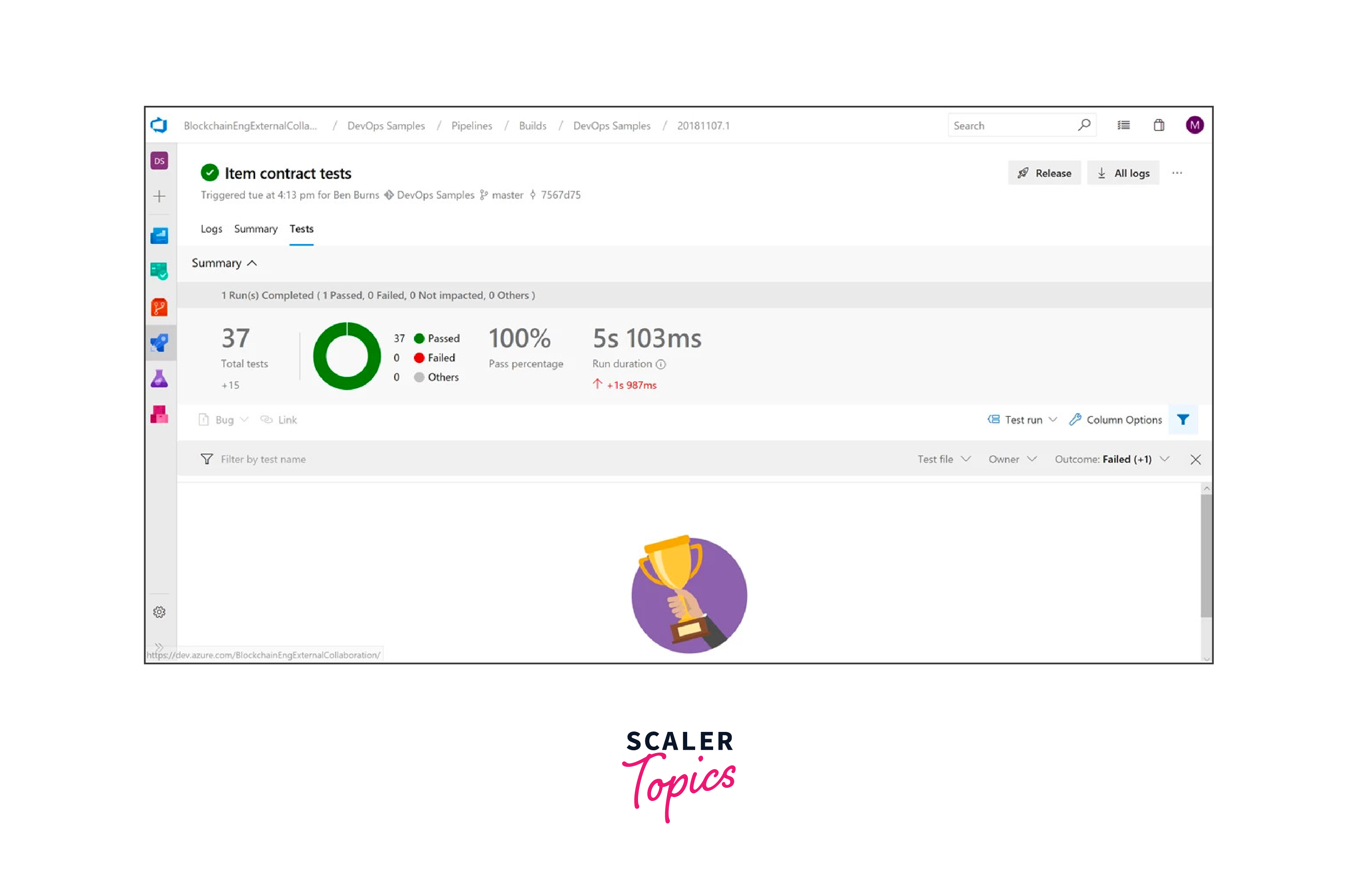Azure Blockchain
Overview
In the era of digital transformation, blockchain technology is reshaping industries by providing secure, transparent, and tamper-resistant solutions for various business needs. Blockchain in Azure, a part of Microsoft's Azure cloud platform, empowers organizations to leverage blockchain for a wide range of applications. In this article, we will delve into the world of Azure Blockchain, exploring its features, use cases, and how to connect, integrate, and deploy blockchain applications.
What is Azure Blockchain?
With its foundations in cloud computing, Microsoft is a leader in technology. Their Azure cloud platform has established their supremacy. However, Microsoft was aware that they had a bigger part to play in the industry. The Blockchain in Azure and Azure Blockchain application are useful in this situation. Another name for this is "Blockchain on Azure."
For creating, hosting, and maintaining blockchain technologies, Azure provides a comprehensive end-to-end solution. Developers can explore with pre-defined and modular networks by beginning with their simplified development platform. The infrastructure is designed to facilitate development that is simpler. Furthermore, the tools are designed with speedy startup times in mind. On Azure, blockchain is all about iteration and validation.

In contrast, Azure Blockchain-as-a-Service (BaaS) leverages blockchain technology to offer services to its clientele. Their strategy is by no means decentralized, though. Because it provides a centralized platform for developing, promoting, and selling blockchain, BaaS is the complete opposite of decentralization. Although BaaS as an ecosystem adds value, it must contradict the fundamental tenet of decentralized Blockchain in order to do so. They do, nevertheless, support a large number of enterprise blockchain systems.
Ethereum Networks With the Azure Blockchain's support:
Ethereum, Hyperledger Fabric, Corda, and Quorum Ledger are supported by Blockchain in Azure Service. You are not required to handle the ledger as a business. Furthermore, there are no expenses linked to the ledger itself. On the other hand, when an app is developed and operates on the Blockchain, you have to pay for it. By devoting the necessary time and resources, you will obtain virtual computers along with the related infrastructure.
Azure Blockchain handles growing transaction and participant numbers through:
-
Consortium Scaling:
It supports the addition of new members to a consortium network as it grows.
-
Horizontal Scaling:
By adding more nodes to the network to distribute the transaction load.
-
Vertical Scaling:
Adjusting node performance to handle increased transaction volume.
-
Performance Optimization:
Utilizes Azure's cloud capabilities, including data storage, security, and monitoring tools to optimize blockchain performance.
-
Integration:
Easily integrates with Azure services for improved performance and scalability, such as Azure Functions and Azure Logic Apps.
These techniques enable Azure Blockchain to accommodate increasing transactions and participants in a network efficiently.
Features of Azure Blockchain
-
Support for Different Blockchain Networks:
Four well-known Azure blockchain frameworks—Quorum, Ethereum, Corda, and Hyperledger Fabric—are supported by Azure Blockchain Services. Additionally, these frameworks are not restricted because Azure Blockchain will undoubtedly enable additional ledger protocols in the future. There will be more "Azure Blockchain Framework," to put it briefly.
-
No Need for Administration:
Azure is in charge of all the infrastructure and backend technologies used to run the blockchain network.
-
Streamlined Implementation:
Using the various blockchain tools, like the Azure CLI and Azure portal, deploying Azure blockchain services is simple. To facilitate the development of blockchain-related apps, the Visual Studio code has also been modified to accommodate the Azure Blockchain extension. In addition, transaction nodes and provisioning validators can access it. Additionally, you may control the storage and security of Azure Virtual Networks.
-
Protection:
Firewall rules safeguard each transaction node as well as the validator nodes. To access them, as the owner, you must first configure the firewall. Every transaction node has access to data encryption as well. TLS is used for it. You can also add access keys, additional firewall rules, or even basic authentication on top of it.
You'll also be astounded to learn that Microsoft has already spending $1 billion USD a year in security. In addition, 3500 security specialists who guarantee data protection are employed by them. Finally, they have a higher number of certifications than other cloud providers, which attests to their security.
-
Maintenance:
In order to keep the nodes operating with the most recent version of the Blockchain, they are also maintained. Since Azure BaaS is a managed service, Azure is in charge of overseeing everything.
-
Azure Blockchain WorkBench:
Microsoft offers Azure Blockchain WorkBench, a free solution for managing Blockchain in Azure applications. It is made up of Azure features and services that let you build and implement blockchain apps.
The Azure team worked tirelessly for eighteen months to produce Azure WorkBench. They have created blockchain templates and collaborated with developers.
-
Scaling and Performance:
Azure Blockchain Service is a fully managed blockchain platform that offers scalability through flexible consortium network configurations. It can scale both horizontally and vertically to accommodate changing workloads and demands, making it suitable for a wide range of blockchain applications. It also integrates with other Azure services to enhance performance and security.
-
Monitoring and logging:
The monitoring function has reached its completion. Many detailed indicators are available here for you to keep an eye on your blockchain ecosystem. Azure Monitor Service is in charge of it; there, you may find out about node storage, CPU, memory, and other crucial metrics like transaction queue depth and blocks mined, among other things!
Businesses Making Use of Azure Blockchain Use Cases
Blockchain technology, originally developed as the foundation for cryptocurrencies like Bitcoin, has evolved into a versatile solution with applications extending far beyond digital currencies. It serves as a distributed ledger system that records transactions in a way that is secure, transparent, and immutable. Azure Blockchain is Microsoft's cloud-based platform that simplifies the adoption of blockchain technology, making it accessible to a broader audience of businesses and developers.
Let's look at the businesses utilizing blockchain technology and attempt to find out how they are doing it in order to gain a better understanding of the potential of Azure blockchain.
-
Starbucks
Starbucks is thriving thanks to blockchain technology. But in order to carry out their plan completely, they are enlisting Microsoft's assistance. To make sure that they can continue to expand in the right path, they just struck a big deal with Microsoft.
-
Insurwave
One of the main issues that has to be resolved in the twenty-first century is Insurwave Marine insurance. However, Blockchain's special qualities—transparency, immutability, and more—can help solve the issue! Several major participants, including EY, Guardtime, A.P. Moller-Maersk, and R3, founded Insurwave in order to establish the first maritime insurance blockchain platform in history. They use global blockchain for insurance solutions and Microsoft Azure to power the organization.
-
Xbox
Xbox, a division of Microsoft, makes good use of Azure Blockchain technology. They give the Xbox game publishers information about royalties via Blockchain. Because it is completed in real-time, the 45-day procedure is reduced to a matter of minutes. All in all, it's a step in the right direction to use Blockchain on Azure to automate one of the crucial components of Xbox. 2018 saw the adoption, and since then, they have greatly improved their systems!
-
Nasdaq
A further major advantage of the Blockchain is for Nasdaq Capital Markets. Because they have been utilizing Azure, Nasdaq is aware of this. An infrastructure that oversees over 100 exchanges and other departments operating in 50 nations is hosted by their mission-critical technology arm! They are integrating Blockchain technology with the Nasdaq Financial Framework, which manages the whole infrastructure.
Connecting and Integrating Blockchain in Your Application
In short, Workbench integration samples in the following domains are included in the Blockchain Application Development Kit:
- Legacy programs and protocols: FTP file transfers, handling of comma-separated files, and data delivery via email.
- Data: PowerBI, Excel, SQL, and Azure Search.
- SaaS: includes Gmail, Outlook, Dynamics, and SharePoint.
- Registries: An accelerator that can be used to create a personalized registry and smart contracts for registry items in any situation.

A step wise guide is provided below:
-
Select the Appropriate Blockchain Platform:
Choose a blockchain platform that aligns with your application's requirements. Platforms like Ethereum, Hyperledger Fabric, and Corda are popular options. The choice of platform will depend on factors such as consensus mechanisms, programming languages, and the specific use case of your application.
-
Set Up a Development Environment:
To begin integrating blockchain into your application, you need a development environment. You can install the necessary software and tools for the chosen blockchain platform on your local machine or use a cloud-based development environment if available. For example, you can use Microsoft's Azure Blockchain Workbench or Amazon Managed Blockchain for cloud-based development.
-
Define Your Use Case and Smart Contracts:
Clearly define the use case for your application and identify the specific tasks or transactions that will be executed on the blockchain. Develop smart contracts to encapsulate the business logic of your application. Smart contracts are self-executing agreements that run on the blockchain and define the rules of your application.
-
Write and Deploy Smart Contracts:
Write the code for your smart contracts using the appropriate programming language and development tools provided by the blockchain platform. Once your smart contracts are ready, deploy them to the blockchain network you've chosen. This step may involve compiling and deploying your smart contracts to the blockchain network using the platform-specific development environment or tools.
-
Develop Application Components:
Build the components of your application that interact with the blockchain. These components, often referred to as "off-chain" components, handle user interfaces, database management, and any interactions with the blockchain. You'll need to use application programming languages (e.g., JavaScript, Python, or Java) to create these components.
-
Establish APIs for Communication:
To interact with the blockchain, your application components need to communicate with the smart contracts deployed on the network. Create APIs or interfaces that enable this communication. This typically involves using web3 libraries (e.g., Web3.js for Ethereum) to facilitate interactions with the blockchain.
-
Implement User Authentication and Authorization:
Define user authentication and authorization mechanisms to control access to your application and ensure secure interactions with the blockchain. This is crucial for maintaining data integrity and security.
Deploying a Blockchain Application
Users can deploy contracts, call contract actions, read contract state, and activate other Logic Apps based on events from the ledger with the Ethereum blockchain connection, which is already available.

The good news is that, similar to other forms of solution development, this paradigm can be easily addressed in a DevOps model, despite certain subtleties in the approach.

A step wise guide is given here:
-
Select Deployment Environment:
Determine where you want to deploy your blockchain application. You can choose between on-premises, cloud-based, or hybrid deployments. Cloud platforms like Azure, AWS, and Google Cloud offer managed blockchain services that simplify deployment.
-
Set Up the Blockchain Network:
If you haven't already, create a blockchain network on the chosen blockchain platform. Configure the network parameters, such as consensus algorithms, node configurations, and network permissions, based on your application requirements.
-
Install and Configure Your Application:
Deploy your off-chain application components, such as web servers, databases, and application servers, to the selected environment. Ensure that these components are properly configured to interact with the blockchain network.
-
Connect to the Blockchain Network:
Connect your application to the blockchain network by providing the appropriate API endpoints and credentials for your smart contracts. Test the connection to ensure that your application can interact with the blockchain successfully.
-
Test and Verify Functionality:
Conduct extensive testing to verify that your blockchain application operates as expected. Test for various scenarios, including transaction processing, data retrieval, and security measures.
-
Scale and Monitor:
As your application usage grows, be prepared to scale your blockchain network and application components. Implement monitoring and alerting systems to keep track of the network's health and the application's performance.
-
Maintain and Upgrade:
Regularly maintain and update your application and smart contracts to incorporate new features, address vulnerabilities, and improve performance. Blockchain is an evolving technology, and keeping your application up to date is crucial.
Conclusion
- Azure Blockchain is a cloud-based blockchain-as-a-service platform offered by Microsoft.
- It provides tools and services for building, deploying, and managing blockchain applications.
- Blockchain in Azure supports a variety of blockchain protocols and frameworks, including Ethereum, Corda, and Hyperledger Fabric.
- It simplifies the development process with pre-configured networks and integration with other Azure services.
- Azure Blockchain is suitable for enterprises looking to leverage blockchain technology for supply chain management, identity verification, and more.
- Its integration with Microsoft's ecosystem makes it a compelling choice for organizations already invested in Azure services.
- Regular updates and enhancements ensure Azure Blockchain remains competitive in the evolving blockchain landscape.
